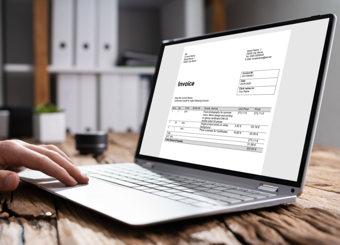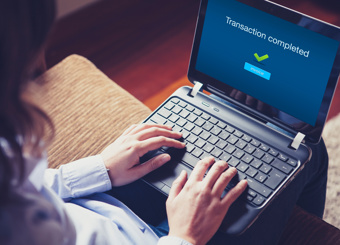Our 10 tips for writing emails
Sending and receiving email is a key part of any job role in the 21st century. In fact, according to the Radicati Group, 205 billion emails are sent every single day.
Of course, we know that not all of these will be the kind of emails you’d send in the workplace, so when we dug around and found out that workers spend about 28% of their working week reading and answering emails, we were shocked!
It’s very basic, but have you ever been coached on how to write the perfect email? Chances are, probably not. And while you think you might it might be simple to pop a quick message to a colleague, we reckon there’s plenty both fledgeling procurement professionals and seasoned professionals can learn from marketeers of all people.
We roped in Medius’s Head of Digital Marketing & Systems, Tim Hartley, for his top tips:
#1 – Do you even need to send an email?
Is it appropriate or right for you to send an email? Will a simple verbal conversation with a colleague, supplier or prospective vendor do the job? Does your enquiry constitute an email?
The problem with email is that despite its convenience, things can get lost in translation over text. If it’s a particularly tricky or sensitive issue or perhaps a very short conversation, verbal communication is the best approach to take. You can then commit any actions or information you may need to refer to in writing in a short summary email afterwards.
#2 – Do you really need to CC that person in?
Use the CC tool carefully. In this blog post from Entrepreneur Europe, Ross McCammon breaks down CC usage:
- CC’ing always communicates something. It says, “I don’t think you and I are going to be able to do this alone.”
- If you CC someone in the middle of an email thread, that person’s identity and presence must be announced.
- Never copy someone on an email as an oblique threat.
- Never copy someone on an email as a way of amassing support.
- Never copy someone on an email as a way of making them feel like they’re a part of something when they’re not.
- Copy people on a “need to know” basis.
- Two CC’s: Three CC’s: rarely. Four CC’s: never.
#3 – Think carefully about your subject line
You want to make sure your subject line is clear, concise and appropriately summarizes what the email contains. It’s even better if you can get a call to action in there, so the recipient knows they need to do something.
Here are a couple of examples:
‘The contract for xxx is enclosed, please read and return’
‘Please process this invoice ASAP’
‘Next steps and actions, let me know if you have any questions’
Crafting a decent subject line might make the difference between your email being opened and actioned immediately or being discarded and left by the wayside - forcing you to chase the recipient.
#4 – Keep the body of your email concise and clear

Keep your message concise and straight to the point. Use simple language to articulate whatever it is you need to get across, without any jargon or waffle.
The simpler your email is to understand the more likely it is that your enquiry will be answered correctly and resolved in a timely manner.
#5 – Assume your recipient doesn’t know what you’re talking about
Keep enough detail in your email so that the recipient has context for the things you’re referencing in your message. You don’t want to confuse people with a note that fails to spell out the fundamental things you’re trying to say.
If you need to include detail, for example, an action plan, avoid long paragraphs. Any more than six sentences and you’re going to risk losing the reader in a sea of text. Use formatting like bullets, numbers or hyphens to help present your points.
#6 – Keep your email formal
If you’re dealing with lots of people you don’t really know, such as prospective suppliers or people from outside the business, it’s best to keep your email formal. It’s fine to use contractions in your sentences, but avoid colloquialisms and slang terms, internet talk and other informal language.
You want to convey the sense of being professional and utilizing standard English will help you do that.
#7 – Proofread what you’ve written
Once you’ve finished writing your email, take a moment to carefully read what you’ve written. Ask yourself these questions:
- Does my email make sense?
- Is it clear to the reader what you’re asking for?
- Is it concise and straight to the point?
- Are the relevant people copied in?
If you answer no to any of these questions, revisit the email and adjust it. Rinse and repeat the process until your email is honed in.
#8 – Eliminate spelling and grammar issues

Once you’ve proofread your email and checked its logic, now is the time to correct any spelling, grammar or punctuation issues. There are plenty of tools you can use to help you check for any glaring problems. We’ve compiled a few:
- Grammarly – the de-facto spellchecker tool, Grammarly is a level up from the spellchecker built into Outlook. It gives you a detailed analysis of your email, as picking up on the spelling and punctuation issues. What’s more, Grammarly can be integrated into your browser, Outlook and preferred web browser.
- Hemmingway – if you’re somebody that takes a while to get to the point in your emails; Hemmingway is the app for you. Taking cues from the famous author, Hemmingway analyses the text of your email and suggests ways to cut copy; ensuring what you’ve written remains succinct.
#9 – Never email when you’re angry or frustrated
Don’t reply to emails when you’re feeling emotional. You might write something inappropriate or won’t help defuse the situation you find yourself in. Instead, read the email and respond half an hour later when you’ve had time to cool off – it’ll help you loads in the long run!
#10 – Don’t email about anything confidential
Mishaps can happen but leaking confidential information by emailing the wrong person is more commonplace than you think. As a rule of thumb, don’t email about anything private without encrypting it in an attachment first.
There are encryption tools you can use directly within Outlook, which are discussed in this guide from the Microsoft Office website.
Do you have any tips to share?
We’ve shared ten of our most useful email etiquette tips with you. Is there anything you’d like to add? Let us know on our LinkedIn and Twitter pages.
If you’d like more blog content like this, subscribe to our newsletter here.






